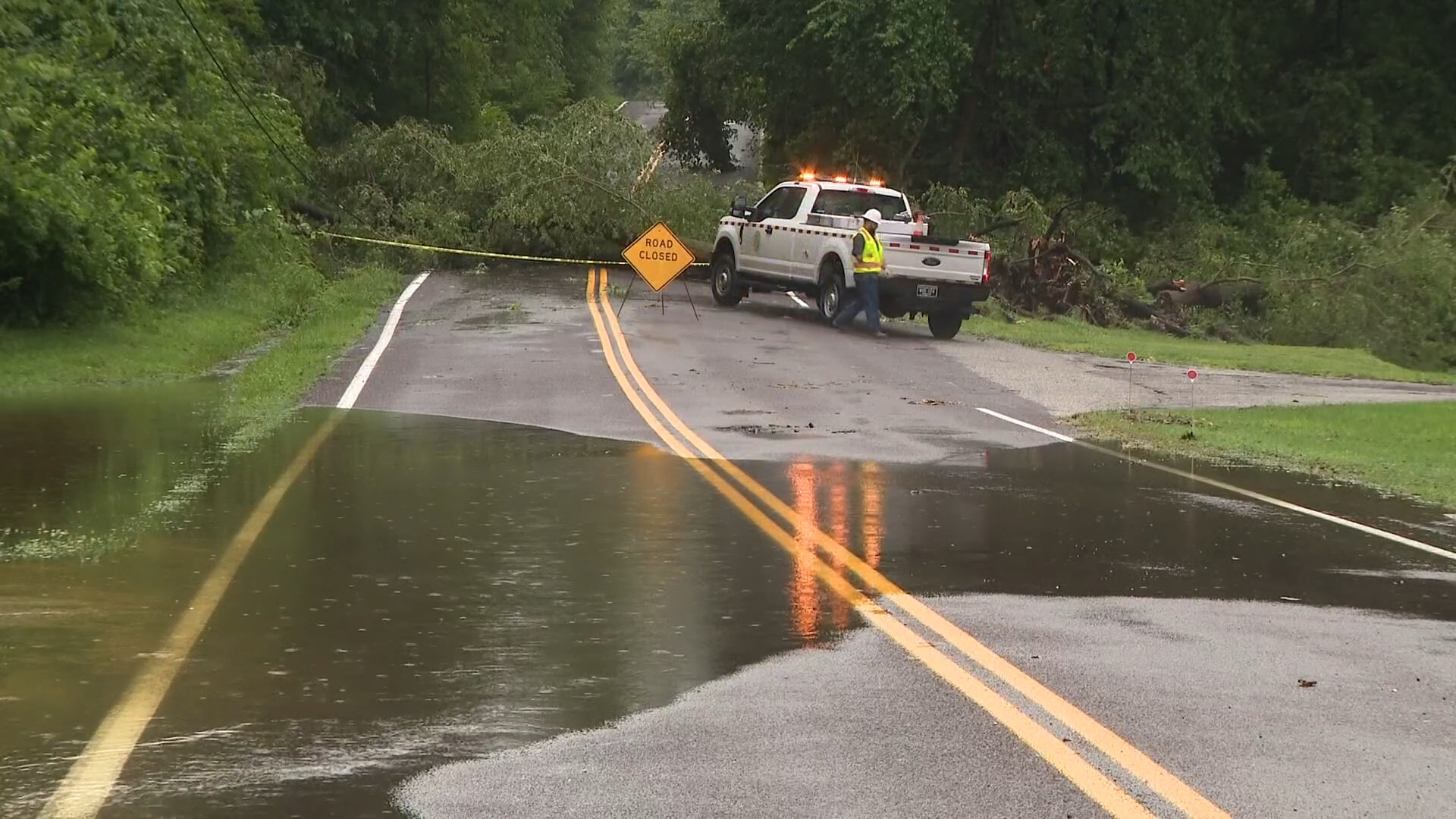ST. LOUIS — The St. Louis region isn't a stranger to flooding, but the severe weather event is expected to get only worse in the future.
The climate risk analysis website Risk Factor forecasts that more than 18,000 properties in just the city of St. Louis alone are at risk of flooding over the next 30 years. The amount of properties puts the city at a "moderate" flood risk.
The National Weather Service (NWS) has numerous designations for flood alerts they issue nationwide, including flood warnings, advisories and watches. The St. Louis region experienced each of those on July 9 as the remnants of Tropical Storm Beryl drenched the area.
But what's the difference between warnings, advisories and watches? And how do flash flood, areal flood, and regular flood alerts differ? We break it down here:
Difference between flood warnings, advisories and watches
Flood alerts, or "products" as NWS calls them, include warnings, advisories and watches.
Flood watches are issued when weather conditions are favorable for a potential flood event to occur. The watches are issued to communities in order so they can prepare for possible flooding, if conditions worsen.
Flood advisories are issued when flooding for areas is expected, but won't be bad enough to significantly threaten life or property.
"This usually deals with nuisance flooding problems, such as flooding in low-lying areas and areas of poor drainage, as well as minor flooding of streets and roadways," NWS said on its website. "This type of flooding causes some inconvenience, but is not generally considered a significant threat to life or property."
Flood warnings are issued when that threshold is crossed, and forecasters do expect severe flooding which likely threatens lives and property.
Difference between flash flooding and areal flooding
General flood warnings are issued whenever flooding is expected to be severe, but the types of flood warnings can get technical.
Flash flood warnings are issued for floods that normally occur within six hours of heavy rainfall.
"This results in small creeks and streams quickly rising out of their banks," according to NWS. "Dangerous flooding in areas near these creeks and streams, as well as low-lying flood-prone areas, develops very quickly and is a significant threat to life and/or property."
Areal flood warnings, however, are issued for flooding that takes longer than six hours to develop. Persistent moderate rainfall can cause a slow buildup of water in low-lying and flood-prone areas, as well as creeks and streams.
"Even though [areal] flooding develops more slowly than flash flooding, it can still be a threat to life and property," NWS said.
Top St. Louis headlines
Get the latest news and details throughout the St. Louis area from 5 On Your Side broadcasts here.

